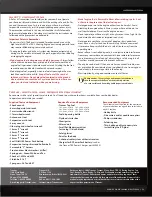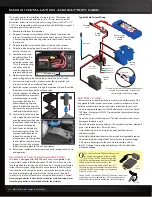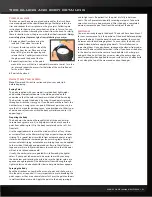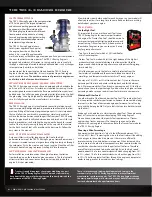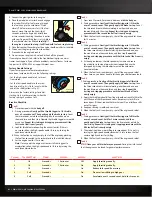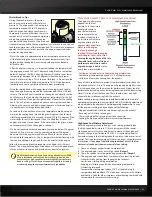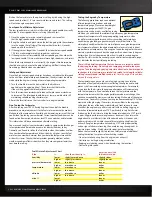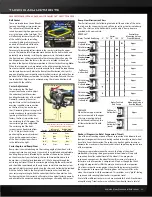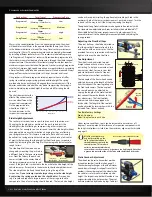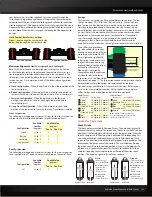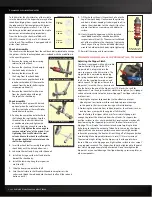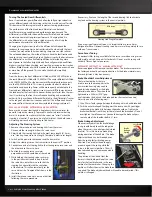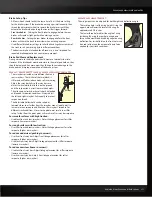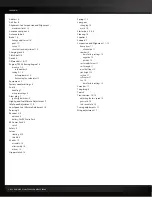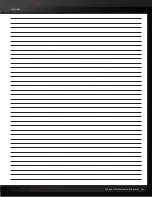
REVO PLATINUM EDITION • 17
Brake Set-up Tips
• All four wheels should lock at the same time. This is the base setting
for the brake system. If the brakes do not engage simultaneously, then
thread the adjustment wheels in toward the brake levers until they
actuate the brakes when pushing the transmitter trigger forward.
•
Front brake bias
- Setting the front brakes to engage before the rear
brakes will create a slight push while entering a corner.
•
Rear brake bias
- Setting the rear brakes to engage before the front
brakes will cause the truck to oversteer when entering a corner.
• Use different brake bias settings to tailor the handling characteristics of
the truck to suit your driving style in different conditions.
• The dual rear brake is intended for off-road use. It is not intended for
repeated brake application on concrete or pavement.
Brake Pad Wear and Replacement
During normal use the brake pads should wear at a relatively slow rate.
However, if the brake pads wear down close to the metal pad holders, they
should be replaced. Any more wear than this could cause damage to the
brake parts and improper operation of the brake system.
SWAY BAR SETTINGS AND ADJUSTMENTS
• The sway bar set includes two different front and
rear sway bars. The thicker of the two (black) is
stiffer and will further reduce body roll in cornering.
• Adjust the sway bar links so the sway bars are
almost vertical while the truck is on the ground
and the suspension is at rest (normal ride height).
This allows equal sway bar travel in both unloaded
and loaded suspension conditions. Always adjust
the left and right sway bar links equally to prevent
suspension tweak.
• The Adjustable hollow balls can be raised or
lowered closer to or further from the sway bar mount (pivot point) to
increase torsion response and fine tune the sway bar’s response for
different track conditions. Closer to the pivot point results in a stiffer
setup, further from the pivot point will result in softer sway bar response.
For smooth surfaces with high traction:
• Use black front and rear sway bars. Adjust linkage placement for stiffer
response (lower on sway bar).
For rough surfaces with low traction:
• Use silver front and rear sway bars. Adjust linkage placement for softer
response (higher on sway bar).
To reduce understeer (pushing in corners):
• Use silver front sway bar. Adjust front linkage placement for softer
response (higher on sway bar).
• Use black rear sway bars. Adjust linkage placement for stiffer response
(lower on sway bar).
To reduce oversteer (loose in corners):
• Use black front sway bars. Adjust linkage placement for stiffer response
(lower on sway bar).
• Use silver rear sway bar. Adjust front linkage placement for softer
response (higher on sway bar).
WING ADJUSTMENT
The wing mount can be adjusted for both height and deflection angle.
• The two top holes set the wing height. Using the
upper hole will lower the level of the wing by
approximately 3/8 inches.
• The lower three holes adjust the angle of wing
incidence. By using the rear hole, wing down
force will be maximized by adding negative wing
deflection. For less deflection, the front holes can
be used to fine tune the amount of down force
needed for your track conditions.
TUNING ADJUSTMENTS
Softer
Stiffer
5304 Manual Work.indd 17
3/12/08 7:48:57 PM

